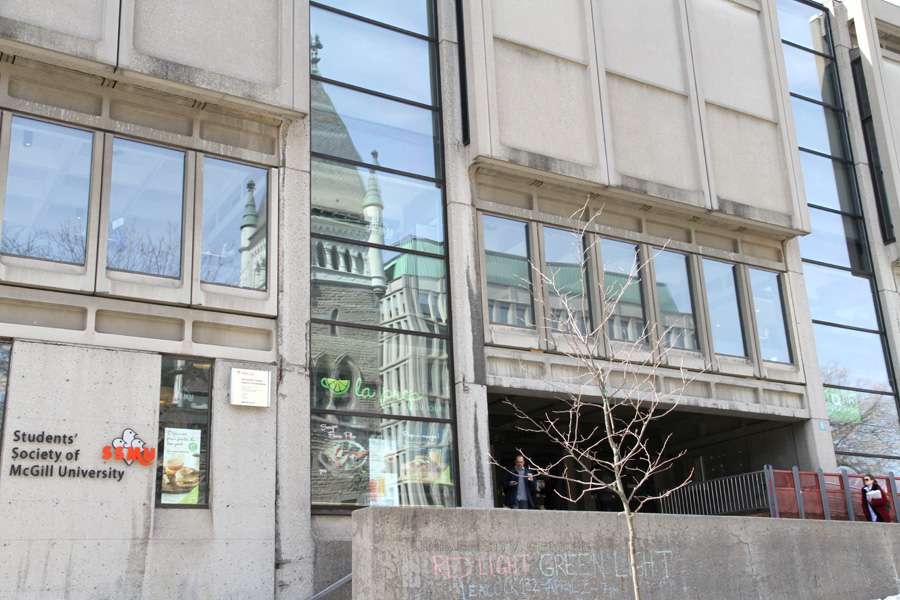The McGill Tribune Opinion section asked staff and student members of the McGill community to answer the question, “Where is McGill heading when it comes to faculty diversity and representation, and where should it be heading?” Read on for their responses.
Tynan Jarrett | Isabelle Oke | Susan Gaskin | Sydney Sheedy
Tynan Jarrett
McGill Employment Equity Advisor
McGill is in action when it comes to faculty diversity and representation. At an institutional level, we have acknowledged that McGill’s Employment Equity Policy, passed in 2007, provides an important framework for the university, but did not lead to meaningful progress toward closing important gaps in representation among McGill’s professoriate. Racialized and Indigenous scholars, scholars with disabilities, and women scholars all remain underrepresented in our faculty, and although our data is incomplete, LGBTTQ2 scholars are also likely underrepresented.
Over the past two years, McGill has taken a number of important steps toward positive change; these include the integration of specific employment equity targets into the Provost and Vice Principal (Academic)’s Strategic Academic Plan, the initiation of priority hires emerging from the Provost’s Task Force on Indigenous Studies and Indigenous Education, and, in Summer 2017, the creation of the Employment Equity Advisor position in the Office of the Provost—the first time such a position has existed at McGill—which is my current role. In addition to efforts made centrally, a number of faculties have implemented their own successful Employment Equity strategies: The Faculty of Engineering, for example, has made strides in the past couple of years through a 2015 initiative that includes a series of checks and balances throughout the hiring search process.
The challenge for McGill moving forward is twofold: Firstly, we need to move the numbers. To do this, we need to have robust conversations about equity and hiring across the University. As an administration, we must increase the McGill community’s capacity to think critically about how we measure excellence, about what informs our institutional priorities for research and teaching, and about what role bias has in our evaluation of candidates for hiring and promotion. Moreover, we need to consciously build up underrepresented scholars in terminal degree programs and post-doctoral positions.
Secondly, we need to look beyond the numbers. We must also create space for scholars from underrepresented groups to inform the existing practices of the institution, including in research and teaching. Moreover, we need to take steps to address the service overload that negatively affects the careers of members of underrepresented groups. Finally, we need to strengthen measures to address structural discrimination, and acknowledge that we can do better than we are currently.
McGill needs to approach the challenge of achieving equity and diversity within the professoriate in a manner that befits an institution of higher learning. We are facing a complex, real-world problem, a solution for which requires sustained effort, resources, curiosity, and determination, and that must be grounded in research, and in the spirit of innovation and experimentation.
Isabelle Oke
SSMU Vice-President University Affairs
McGill’s Strategic Academic Plan sets expanding diversity as an institutional goal of the University. In the past six months working at the Students’ Society of McGill University (SSMU) as Vice-President (VP) University Affairs, I’ve seen open discussions about the diversity of the composition of committees, initiatives from the Social Equity and Diversity Education (SEDE) office to change the way we talk about equity (such as café collabs), and a 2017 Senate report on data collected to evaluate employment equity on campus. In terms of where McGill should be headed in terms of faculty diversity, the Senate employment equity report shows a gradual increase in representation of women in academic faculty positions. However, the job isn’t done as soon as more women and minority professors are employed. A diverse campus is a campus where traditionally underrepresented members are also able to thrive and accomplish great things, without having to face disrespect, lack of recognition, and lack of support.
Minority students at McGill need to see themselves represented among faculty in order to feel welcome on campus—to know that at least someone else has moved through the campus similarly embodied, and found a way to make sense of their surroundings and succeed. Furthermore, the few existing faculty members who have underrepresented identities are often in high demand and relied on to support minority students in a way that is often undervalued. As such, McGill needs to recognize that supporting students beyond the content of a course—such as through the institution, through academic careers, and through the challenges that come with being a student—is work that systematically demands more of some faculty members than others. We must continue to do better in supporting faculty members who provide this invisible, additional, unpaid labour.
There are other types of harassment and discrimination that, little by little, make both faculty members and students on campus feel unwelcome, which will ultimately lead them to look for greener pastures elsewhere. The insidious nature of this harassment and discrimination is something that policy cannot systematically manage on its own. The way members of the McGill community relate to one another, and how we define success at this university, will have to change if we want to invite and maintain diversity in our faculty ranks. This isn’t achievable until we’re ready to let go of certain traditions and self-perceptions that dictate who we mark as the 'average McGillian,' and what constitute reasonable needs and aspirations.
Susan Gaskin, Brace Associate Professor, Civil Engineering
Chair of Senate Sub-committee on Women
The question of McGill’s faculty diversity is raised in the context of a university community with a significant international student body—30 per cent, from 150 different countries—located in a multicultural city, in a country which immigrants and their descendants share with First Nations groups. It can be explored by considering the opposite question: Should we aim for a homogeneous faculty, in terms of race, gender, sexual orientation, or ability? The answer to this is clearly no. In a diverse community, homogeneity implies exclusion or suppression of those not in the privileged group. History provides us with ample evidence that enforced homogeneity is motivated by the maintenance of a privilege that would be insecure in an equitable environment.
A university’s faculty needs to be representative of its community, and, in McGill’s case, this is a very diverse community. It is a university’s role to extend the limits of knowledge and understanding in culture and science by challenging assumptions and unsettling complacency with questions. It should provide fertile ground for the exchange of ideas to drive a dynamic process of intellectual stimulus, enhanced by differences in experience, expertise, interpretation, and priorities. As research has shown, productivity and creativity improve with increased diversity.
To achieve faculty diversity and representativeness, action is needed to attract, hire, and then retain a diverse and intersectional faculty representative of our community. Currently, 32 per cent of McGill faculty are women, which represents an increase from 23 per cent in 2000. Continuing at this rate, faculty gender parity will only be achieved by 2065.
To attract diverse faculty members, McGill administration needs to show that we provide a supportive environment for academic pursuits that challenges the status quo, both in knowledge and social hierarchy. There is a wealth of excellent candidates who the university could hire, yet in hiring decisions, confirmation bias can still occur. Thus, we need to be proactive, through transparent hiring processes that involve decision-making participation from an intersectional representation of all ranks of faculty and from students.
Beyond the hiring process, retaining a diverse faculty further requires both support of their scholarly pursuits and diversity of opinion, and provision of a work environment accommodating their varied needs. A good approach can be found in the United Nations Educational, Scientific and Cultural Organization (UNESCO)’s 1997 Recommendation Concerning the Status of Higher Education Teaching Personnel. At McGill, we need to actively pursue greater faculty diversity.
Sydney Sheedy
Social Equity and Diversity Education Office (SEDE) Communications Director
McGill has been explicit about its commitment to making the university a space that is inclusive and diverse for all, recognizing that the different historical and ongoing barriers individuals face require different support systems. However, sometimes intention can preclude the actual day-to-day work of implementing equity at all institutional levels. Everyone who is a part of the McGill community must understand what responsibilities they have to this collective project, and that requires extensive infrastructure on the part of McGill to make sure that there is attention to the specific needs of all its members.
At SEDE, education is central to our mission of building an equitable campus. This can take many forms, from unlearning harmful beliefs and practices related to race, gender, sexuality, ability, and class, to providing students, staff, and faculty with the skills and tools they need to be able to navigate and have an impact in their environments.
Having a more equitable representation of diverse perspectives and people in McGill faculties is not only important for the people who work here, but for the associated students who are learning how to formulate critical thinking that challenges the narratives we are over-served in our society. This means actually hiring and consulting with faculty and staff from historically marginalized groups—which is why the Employment Equity plan was implemented in 2007—as well as making sure there are strategies in place that promote retention and success of these individuals. For example, the 2017 Provost’s Task Force on Indigenous Studies and Education made recommendations to increase Indigenous capacity-building not only by recruiting Indigenous staff, faculty, and students, but also in making sure that they will feel as though they are a part of a space that celebrates the initiatives and accomplishments of Indigenous peoples.
Few would deny the importance of respect, inclusion, and diversity at McGill, but it is also easy to resort to superficial practices that don’t always address the deep-seated and enduring causes of inequality that play out in university settings. Diversity is needed at all levels to maintain a richness of ideas and an understanding of how we can learn from our differences. McGill should continue to support and promote practices that identify and address barriers to such diversity, and be adaptive to the evolving needs of this ever-changing process.









